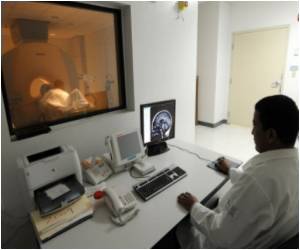
"Computed tomography (CT) is regarded as the best method for follow-up of endovascular stents. However, there are concerns regarding the long-term health effects of ionizing radiation exposure," said Andrew M. Taylor, MD, lead author of the study. "Conventional angiography can be used to image stents; however, it is not suitable for routine surveillance because of the invasive nature of the procedure," said Taylor.
The study, performed at the Great Ormond Street Hospital for Children in London, included three contemporary great vessel stent materials (nitinol, platinum-iridium and stainless steel) that were implanted into an aorta model and imaged with conventional angiography, ten different MRI sequences and CT. "Study results showed that the diagnostic accuracy of conventional angiography and CT was high for all stents and MRI visualization of the stent depended on the type of stent and the sequence used," said Taylor.
"MRI does not use radiation; however, because of artifacts (defects found in some images) it has traditionally been thought of as an unreliable method of assessing stents," he said.
"Our findings suggest that certain [MRI] sequences are accurate methods of assessing stent stenosis. This would allow more frequent assessment of stents at lower risk to patients and represent a significant change in clinical practice," said Taylor.
Advertisement








